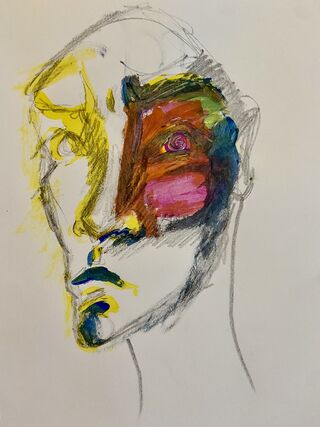Dopamine
How Striatal Dopamine Is Linked to Hallucinations
New research findings could have implication for the treatment of psychosis.
Posted May 6, 2022 Reviewed by Tyler Woods

New research on psychosis reinforces what has long been suspected: that people hear what they expect to hear. On a non-clinical level, this may mean hearing your phone vibrate when you are expecting a call. For those with schizophrenia and related psychotic disorders, however, the hallucinations can become more elaborate as they are linked to excessive striatal dopamine (Cassidy et al., 2018).
What is Perception?
Perception is a subjective experience. Bayesian models characterize perception as a combination of prior experiences with new sensory evidence. When prior experiences are weighted more heavily, however, hallucinations and illusions may result. This happens as a result of a dopamine-dependent gain-control mechanism (Alderson-Day et al., 2022).
Essentially, the brain uses priors, or past experiences, to generate a sensory expectation. When visual or audible input is distorted, unclear, or missing, the brain may supply the sensory input based on what it would expect to hear or see given a certain context. In individuals without psychosis, this process often runs quite smoothly and accurately. In fact, this is the very process that accounts for the effect of optical illusions.
Why Dopamine?
The dopamine hypothesis as an explanation for psychotic experiences has been long-held and widely accepted. The reason why dopamine appears linked to psychotics experiences, however, was unclear until recently. Specifically, most antipsychotic medications work by blocking dopaminergic activity in the striatum. The mystery lay in the fact that neither dopamine nor the striatum are typically associated with sensory processing. They are, however, associated with sensory expectations (Cassidy et al., 2018).
Implications for Treatment
If context-dependent sensory expectations account for hallucinations, then perhaps sensory expectations can be a target of novel therapies. Pharmacologically, this may be achieved through the dopamine pathway or other downstream pathways of perceptual processing, such as via the dorsal anterior cingulate cortex.
Psychologists and neuropsychologists may also be able to utilize the expectation hypothesis via cognitive remediation and cognitive-behavioral therapy modalities. This may include bolstering working memory to improve contextual processing, altering expectations through cognitive restructuring, or behavioral experiments wherein individuals learn to control their hallucinations in the same way they would intrusive automatic thoughts.
Furthermore, the use of optical illusions as a diagnostic screener may be of interest. If the process of perceptual expectations is disrupted in those with psychosis, then they would likely perform differently from healthy controls when presented with optical and audible illusions. The ease with which this type of screener could be utilized may make it more amenable for use in children and adolescents, rendering it a potential early detection tool.
References
Alderson-Day, B., Moffatt, J., Lima, C. F., Krishnan, S., Fernyhough, C., Scott, S. K., ... & Evans, S. (2022). Susceptibility to auditory hallucinations is associated with spontaneous but not directed modulation of top-down expectations for speech. Neuroscience of consciousness, 2022(1), niac002.
Clifford M. Cassidy, Peter D. Balsam, Jodi J. Weinstein, Rachel J. Rosengard, Mark Slifstein, Nathaniel D. Daw, Anissa Abi-Dargham, Guillermo Horga. A Perceptual Inference Mechanism for Hallucinations Linked to Striatal Dopamine. Current Biology, 2018; DOI: 10.1016/j.cub.2017.12.059


